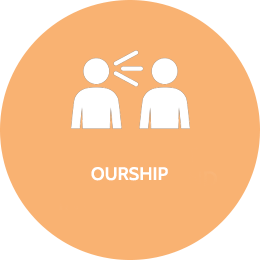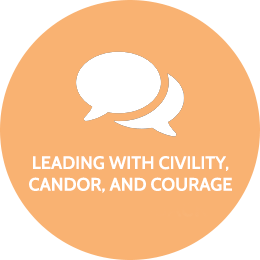CULTURE EATS STRATEGY FOR BREAKFAST!
For a corporation to achieve true success in all areas, the recognition, acknowledgment, and striving toward the embodiment of this viewpoint is crucial. Sure, the bottom line is what matters to stakeholders. What is too often forgotten is that a good part of that bottom line hinges on a stable, vested, and super performing team of employees Put bluntly, corporate culture is what keeps talent, or sends them to your competition. Is your Corporate Culture conducive to employee growth and organizational organic sustainability?
Why We Do It and Why Your Organization Needs To
Because inclusivity and equality are smart. Because they are right. And because public sentiment, workplace criteria, and consumers and customers demand a real commitment to legitimate corporate cultural progress.
In the long run, the future, however, lies in the quality and culture of leaders who wield authority. As a corporate leader, your mission is to develop the brightest and best teams and leaders. This isn’t achievable with training alone. It is achievable by creating a culture where employees feel valued, included, engaged, and committed to the organization’s success.
Training and Development
To recruit the best talent; to generate employee loyalty; to retain valued employees; to have these optimum individuals help you recruit others like them, then organizations must create cultures where employees feel valued, engaged, and committed to the organization’s success.
What We Do
When you partner with Performance ReNEW, we do far more than implement customized training for your staff. We actively work to transform your organizational culture into an organic self-sustaining growth model.
How We Do It
We utilize a three pronged “Triple A” approach consisting of the following elements:
- Assessment to determine the best specific practices, policies and processes to systematically minimize your company’s potential exposure to internal forces that can be triggered by an employee at any level. Our assessment process is based on the analysis and assessment of key stages and moments during an employee’s life cycle where there may be vulnerabilities and barriers to success
- Action(s) are taken based on what the Assessment Phase has identified as potential vulnerabilities. We work with you and your designated team members to reformulate and retool processes and revise policies. Concurrently, we work with key personnel to enhance the systems currently in place. Throughout the Action Phase, employees are kept in-the-knowledge-loop and educated through comprehensive training and development programs
- Accountability is an all employee requirement from top management down to the newest intern. Without buy-in from employees at every level, disengagement and under performance will continue to permeate your organizational culture. Positive change starts at the top. If key decision makers are resistant to reflecting on and addressing their own behavior, decisions need to be made as to whether they should remain with the company, We help you to assess determine, and manage those transitions. Along with financial reasons to make these decisions, there are overwhelming legal reasons as well.
Performance ReNEW’s Most Requested Training Topics that
Transforms Organizations From the Inside-Out





Unconscious Bias
The term is a bit nebulous but the impact of unconscious bias is too real. Unconscious bias is hard to define in black and white – or two syllable words. Discrimination based on sex or sexual orientation; racial and ethnic background; religious preference, age or health is easy to define and categorize. All are also illegal.
Unconscious bias is not overt. It doesn’t wave red flags and isn’t easy to spot – even to the most astute HR eyes. It’s even harder to correct; partially because it is hard to document and even harder to prove.
Unconscious bias can wreck havoc in an organization. It is insidious; if a manager has an unrecognized bias toward a segment of the population this impacts hiring and promotional practices no matter how qualified the individual. At this level, it might be spotted by HR, team or organization leaders, or any other corporate decision maker. If, and this is a large ‘if’, it is recognized as bias, steps to remedy the situation can be taken.
Unconscious bias can permeate staff meetings – closing off input from talented employees. Sooner or later, these same staff members start looking for new positions because they feel unappreciated and frustrated. In other words, they may not even recognize unconscious bias for what it is.
Employee turnover increases and the costs to the organization escalate – for no apparent reason. Decision makers don’t understand why and the situation might never be addressed. The challenge for the leadership, management, and HR is fourfold:
✓ How to spot unconscious bias
✓ How to validate it as such
✓ How to most effectively and speedily address it
✓ How to root it out of the corporate culture in all areas of the organization
We can help. Because Performance ReNEW’s courses are customized to your specific organization we unearth unconscious bias within a division or throughout the corporate culture. Once unconscious bias is recognized and acknowledged, positive corrections can be enacted.
The end result is a happier, more cohesive and dedicated work force … and vastly improved employee loyalty and team spirit.
If you think unconscious bias might have a foothold in your company we can help. Additionally, unconscious bias can be part of a bigger organizational culture problem. We created a 25 question Organizational Culture Audit to help you determine if your organization could use a transformation.
Bystander Intervention
This training will be a game changer on workplace culture. Employees will not have to wait for guidance on how to address unsavory behaviors; they will have the knowledge, tools and motivation to intervene before inappropriate behavior rises to the level of unlawfulness.
This interactive training:
• Discusses what behavior and conduct is not conducive to creating a positive and inclusive work culture.
• Defines the concept and benefits of bystander intervention.
• Demonstrates how a bystander can support targets of discrimination and microaggressions to prevent future incidents.
• Explores effective approaches for bystander intervention, such as disrupting, supporting, confronting and reporting.
Moving from Allyship to Ourship: Fighting Together for a More Inclusive Work Environment
Allyship is a concept that encourages individuals “to become collaborators, accomplices, and coconspirators who fight injustice and promote equity in the workplace through supportive personal relationships and public acts of sponsorship and advocacy” according to Tsedale M. Melaku. Ourship is not opposed to allyship. Instead, the former perfects the latter as it encourages allies to lay down their privilege and power for the sake of their marginalized neighbors. Coined by Natasha Bowman, Ourship is not just about standing by them; it’s about standing with them. It’s about seeing their problems as our problems, and genuinely sharing the power to move forward.
This interactive training:
• Distinguishes between the concepts of allyship and ourship.
• Provides examples of how ourship can build cultures of inclusion and bystander intervention in the workplace.
• Demonstrates that when applying the concept of ourship, employees take a collective responsibility for creating inclusive workplaces.
Microaggressions in the Workplace
Since 2020, many companies have taken steps to reduce systemic bias. However, there is still much to be done in terms of making DEI (Diversity, Equity, and Inclusion) a meaningful business function. One way employers can help create a truly inclusive workplace culture is by effectively handling microaggressions, the subtle, indirect actions that communicate some sort of bias against a member of a historically marginalized group.
This interactive training:
• Defines and identifies examples of microaggressions in the workplace.
• Demonstrates how microaggressions can be disruptors to inclusive cultures.
• Explores approaches for how to handle microaggressions in a respectful, yet impactful manner.
The Power of One: Leading with Civility, Candor, and Courage
Amid COVID-19, George Floyd, #MeToo, and the rising tide of political anger in our country, Americans feel change more than ever before. Simultaneously, the pandemic and its disruption of “normal” life have made us realize that we can no longer depend on institutional power and authority to cultivate real change.
Based on Natasha Bowman’s powerful TedX talk and upcoming book, this interactive training:
• Introduces the three virtues of influence in the workplace: Civility, Candor, and Courage.
• Explores how the three C’s of influence can create inclusive, positive, and engaging workplaces.
• Discusses the desire for change by individuals by focusing less on specific strategies for effecting change and more on becoming a person of influence who will exercise their influence in their workplace to remove the systemic barriers that exist for themselves and others.
A Partial Client List That Trust Performance ReNEW for their Training Needs







Does your organization need a cultural transformation? Take The Quiz
Testimonials
![]() Natasha made this the best Leadership Development Institute we’ve had in years.
Natasha made this the best Leadership Development Institute we’ve had in years.
Attendee- White Plains Hospital Leadership Development Institute.
![]() The Best Presentation at the Conference!
The Best Presentation at the Conference!
Attendee – SHRM Talent Management Conference
![]() Wow, I didn’t realize how much I didn’t know until I heard Natasha’s presentation.
Wow, I didn’t realize how much I didn’t know until I heard Natasha’s presentation.
Attendee- SHRM Legal and Legislative Conference

